
Developer: Daedalic Entertainment
Publisher: Daedalic Entertainment
Platform: Switch, PC, Wii U
Tested on: Switch
Fire: Ungh’s Quest – Review
When it comes to point-and-click games on the Switch, it’s hard to avoid Daedalic Entertainment. Whether it’s mature titles like Memoria or the satire of the fantastic Deponia series, the German publisher has got such a wide range of story genres available that most people should be able to find a title to their liking in Daedalic’s Switch library. However, the younger crowd wasn’t really covered when it came to the publisher’s offerings. That is, until now, as a port of 2015’s Fire: Ungh’s Quest (which was available on the Wii U as well) joins the lineup. Is this family-friendly point-and-click title the entry point that Daedalic can use to entice the younger crowd or should it have been left extinct?
Story
In what’s a rather bold move, Fire attempts to deliver its story without having any dialogue in the game. The game’s narrative is told through animated scenes, and given the simplicity of the premise, it works well. At the start of the game, the titular Ungh (or so we assume, as his name is never said aloud) is tasked with guarding the campfire of his tribe overnight. Unfortunately, our hapless protagonist falls asleep, resulting in a fireless tribe. It’s now up to Ungh to head out into the prehistoric wilderness and learn the secret of how to make fire. His quest will take him on a tour of the wonderful sights and sounds of the stone age -although he’ll run into some anachronisms as well, including dinosaurs, disco balls and even time travel.
Graphics
One of Fire’s defining features is the cartoon visuals. Just by looking at the screenshots, it should be quite clear that what you’re getting here is a kid-friendly title, although the game does include some risqué humor occasionally. The game relies on its visuals to communicate emotion as well with the usage of exaggerated cartoon reaction faces. The simple animations work well, and the game doesn’t push the Switch to its limits when it comes to the graphics, although motion isn’t always as fluid as we would like it to be. We’re not sure if that is because the animation is deliberately simplistic or simply because of rendering issues, although we have to admit it’s a minor nitpick.
Sound
There is no in-game dialogue in Fire, either on-screen or as audio. That doesn’t mean that Ungh himself is completely silent, as he still “talks” through grunts and groans. The same applies when it comes to the other inhabitants of this prehistoric world. It’s an acceptable take on prehistory, as the English language wouldn’t have been invented yet, but it does make for a rather barren soundscape. Thankfully, the game’s symphonic music and environmental sound effects compensate for this, creating a suitable and cheerful atmosphere.
Gameplay
Unlike the more mature and intricate point-and-click adventure titles that Daedalic usually serves up, like the Dark Eye series, Fire takes a decidedly different direction. What we’re getting here is still a point-and-click game in essence, but one that is focused far more on delivering engaging puzzles than on a gripping narrative. Don’t be deceived however: despite its family-friendly cartoon visuals, the puzzles offered up in Fire can be deceptively tricky. This is emphasized by Fire’s lack of in-game text. Instead of dialogue, communication between Ungh and the various characters and creatures he encounters is delivered through grunts and thought bubbles. Part of solving these puzzles is figuring out *what* the other party wants and not just *how* to get it.
Puzzles are often multi-screen affairs, although you’re not going to have to worry about having items in your inventory for the majority of the game without having an idea about what to do with them, which is something that can happen in more complicated point-and-click titles. Instead, your typical puzzle challenge won’t take up more than a screen or three, with puzzles separated by the overworld. There is overlap between the puzzles though, as a puzzle may reward you with items necessary to complete the next one. Puzzles range from having to venture deep into the stomach of a sick dinosaur and rescue a fairy-like creature from within to aiding a shaman in making it rain. The game does throw you the occasional curveball when it comes to logic and the puzzles can be fairly challenging, especially when they require objects that are hidden. Even so, this is still a game aimed at a family audience, so the difficulty level isn’t up to the point where the leaps in logic are frustratingly obtuse, and Fire is a great title to get the younger crowd into the point-and-click genre. That’s not to say that Fire is purely a kiddie game, as adults should be able to have some fun with it as well.
Should you decide to take on Fire, we highly recommend playing the game in handheld mode rather than docked, as there is a huge disparity between its control schemes. In handheld mode, everything works exactly as you’d expect: the control sticks are used to move Ungh across the screen, the directional buttons are used to show which on-screen elements can be interacted with, and tapping the touch screen will let you perform actions with these elements. Things are a bit different when playing in docked mode, however. You’re not able to use the touch screen, so the game shifts to motion controls to move your “mouse” pointer instead. This shouldn’t be a problem, as there are plenty of games that have motion controls, but we ran into some frustrating calibration issues when we tried playing in docked mode, so we gave up after a few minutes. The strange part here is that both the left and right control stick move Ungh, so the motion controls could’ve been avoided entirely by using one of the control sticks to move the pointer instead.
Conclusion
Fire is a family-friendly entry point into the point-and-click genre on the Switch. It suffers from a few issues -particularly the frustrating motion controls- and fails to fully avoid the pitfalls of obtuse puzzle design, but overall, this is a title that should bring a smile to the faces of anyone playing it, provided they have a sense of humor. The cartoonish aesthetics hide that the puzzles presented here can be more challenging than one would expect, though never frustratingly so. If you’re looking for a game that the whole family can enjoy, give Fire a try.
1 Comment
Leave a Reply
You must be logged in to post a comment.

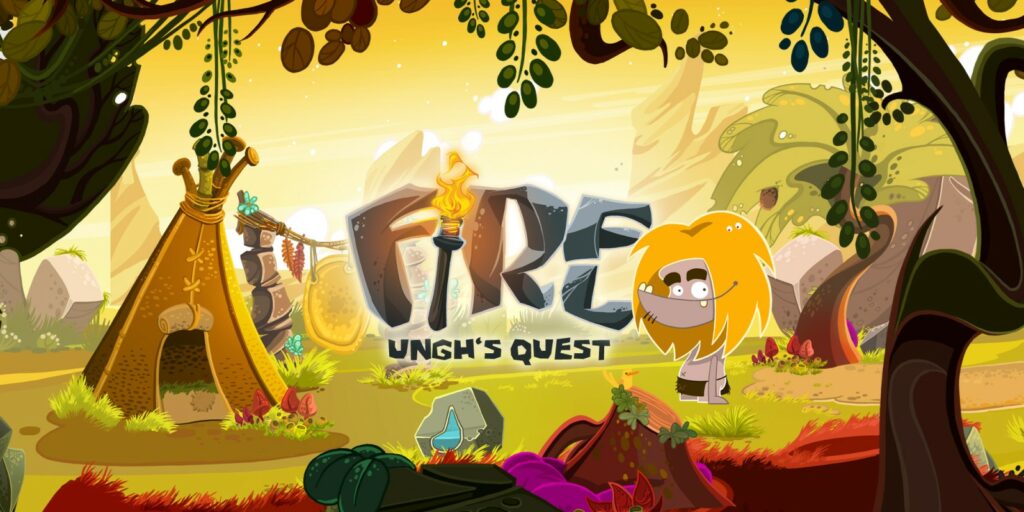
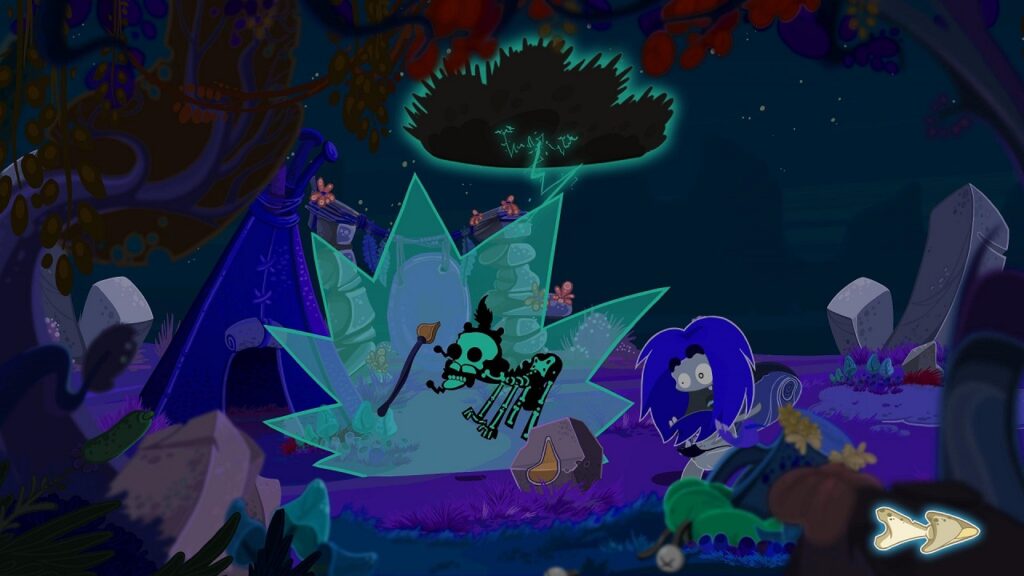

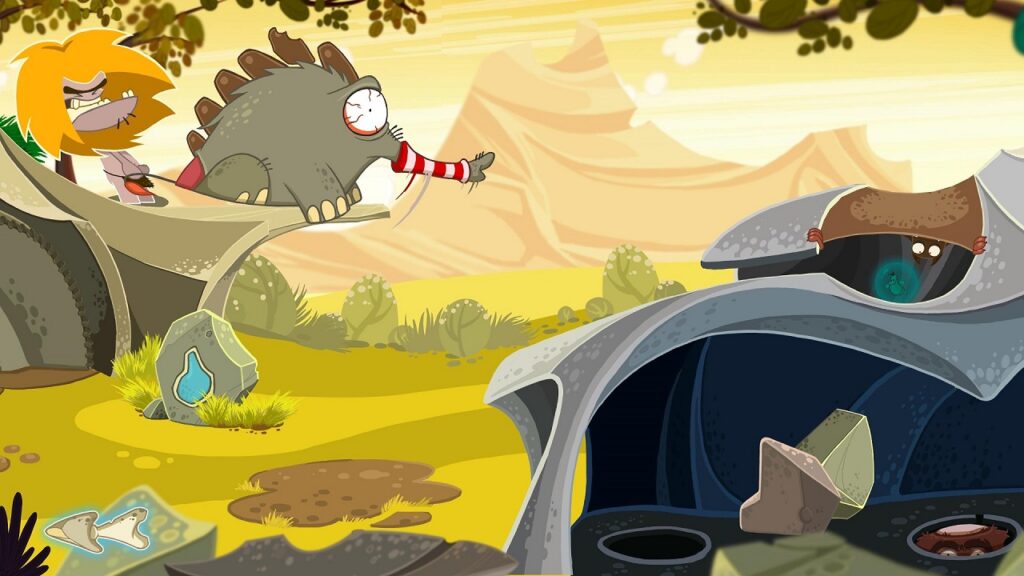
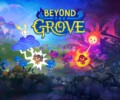

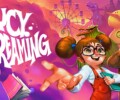

[…] Island series. That’s not to say that the gameplay here is even in the same ballpark as the excellent point-and-click offerings from CrazyBunch’s direct competitor Daedalic Entertainment though, […]